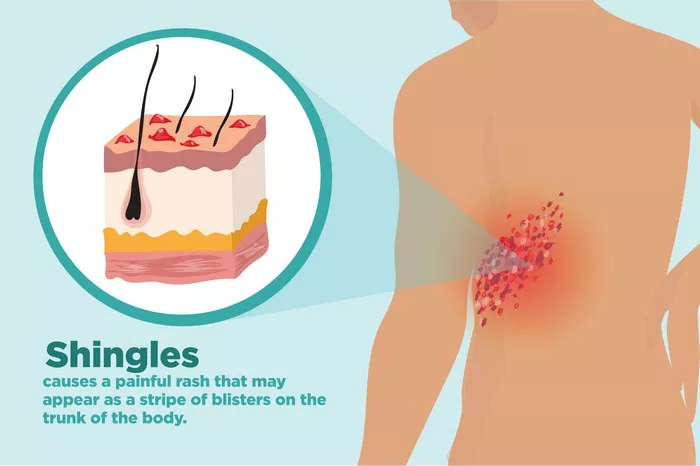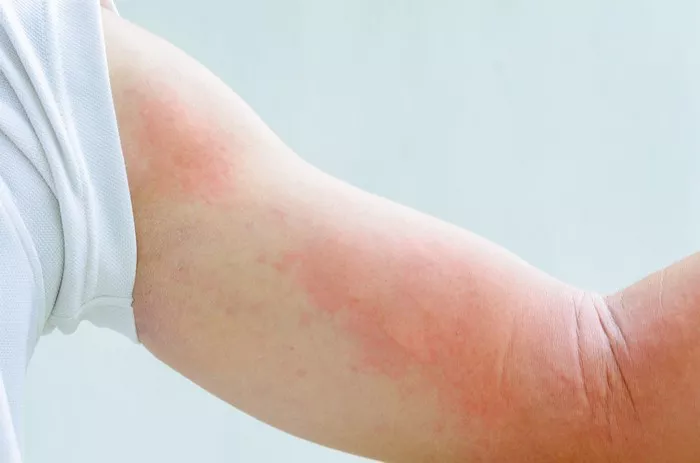Contact dermatitis is a common inflammatory skin condition caused by direct contact with an irritant or allergen. While it can be distressing due to symptoms like itching, redness, and swelling, understanding the healing process is crucial for effective management and recovery. This article delves into what healing contact dermatitis looks like, exploring the various signs and stages of recovery, as well as providing insights into effective treatment strategies.
The Basics of Contact Dermatitis
Contact dermatitis occurs in two primary forms: irritant contact dermatitis and allergic contact dermatitis.
- Irritant contact dermatitis results from exposure to substances that physically damage the skin, such as harsh chemicals, detergents, or prolonged wetness.
- Allergic contact dermatitis arises when the skin comes into contact with an allergen, triggering an immune response.
- Regardless of the type, the initial symptoms are often similar, including redness, itching, swelling, and sometimes blistering. The healing process involves a series of stages that reflect the skin’s efforts to repair and regenerate.
Initial Stages of Healing
Acute Phase
The acute phase occurs immediately after the removal of the irritant or allergen. This stage is characterized by:
- Reduction in Redness and Swelling: The first noticeable sign of healing is a decrease in the intensity of redness and swelling. The skin’s inflammatory response begins to subside as the offending agent is no longer present.
- Lessening of Itching: While itching may still be present, it tends to become less severe as the skin starts to heal.
- Drying of Blisters: If blisters were present, they begin to dry out and form a crust. This is a positive sign that the skin is moving towards the next phase of healing.
Subacute Phase
During the subacute phase, the skin continues to repair itself, and symptoms further diminish. This phase is marked by:
- Desquamation: The skin may begin to peel and flake off, which is a natural part of the healing process. New, healthy skin cells replace the damaged ones.
- Reduced Sensitivity: The affected area becomes less sensitive and more comfortable. Redness may persist but is generally less intense.
- Formation of New Skin: As the old, damaged skin peels away, new skin forms underneath. This new skin may appear pink and tender initially but gradually returns to the normal skin tone.
Intermediate Healing Phase
Epithelialization
Epithelialization is a crucial phase in the healing process, where new epithelial cells grow over the wound. This phase includes:
- Closure of Skin Lesions: Open wounds or raw areas start to close as new skin cells cover the surface. This reduces the risk of infection and further damage.
- Strengthening of New Skin: The newly formed skin begins to strengthen, becoming more resilient. The skin may still appear pink or slightly red but is less susceptible to damage.
Maturation
Maturation is the final phase of the healing process, where the skin fully recovers its structure and function. This phase is characterized by:
- Restoration of Skin Barrier Function: The skin’s protective barrier is fully restored, reducing the risk of future irritant or allergen penetration.
- Normalization of Skin Color and Texture: The color and texture of the healed skin gradually become indistinguishable from the surrounding healthy skin.
- Resolution of Residual Symptoms: Any lingering symptoms, such as mild itching or dryness, typically resolve during this phase.
Complications and Delayed Healing
While most cases of contact dermatitis heal without complications, some factors can delay the healing process or lead to chronic issues. These include:
- Re-exposure to Irritants or Allergens: Repeated exposure can exacerbate symptoms and prolong healing. It’s crucial to identify and avoid the triggering substances.
- Infection: Secondary bacterial infections can occur if the skin barrier is compromised. Signs of infection include increased redness, warmth, swelling, and pus formation. Medical intervention may be necessary to treat infections.
- Chronic Dermatitis: In some cases, contact dermatitis can become chronic, leading to persistent symptoms and skin changes such as thickening and discoloration.
Effective Management Strategies
Proper management of contact dermatitis is essential to ensure a smooth healing process and prevent complications. Key strategies include:
Identification and Avoidance of Triggers
Identifying the specific irritant or allergen responsible for the dermatitis is crucial. This may involve patch testing or careful monitoring of skin reactions to different substances. Once identified, strict avoidance of these triggers is necessary.
SEE ALSO: How to Treat an Itchy Eczema Rash
Topical Treatments
Topical treatments play a vital role in managing contact dermatitis and promoting healing. These include:
- Corticosteroids: Topical corticosteroids reduce inflammation and itching. They are typically used during the acute phase to control symptoms.
- Moisturizers: Emollients and moisturizers help restore the skin barrier and prevent dryness. Regular application can accelerate healing and reduce the risk of further irritation.
- Barrier Creams: These creams create a protective layer on the skin, shielding it from potential irritants. They are especially useful in occupational settings where exposure to irritants is unavoidable.
Systemic Treatments
In severe cases, systemic treatments may be necessary. These include:
- Oral Corticosteroids: For extensive or severe dermatitis, oral corticosteroids may be prescribed to control inflammation.
- Antihistamines: Oral antihistamines can help alleviate itching and improve comfort, especially if the itching interferes with sleep or daily activities.
- Immunosuppressants: In cases of chronic or resistant dermatitis, immunosuppressive medications may be considered to modulate the immune response.
Lifestyle and Self-Care Measures
Adopting certain lifestyle and self-care measures can significantly aid the healing process:
- Gentle Skin Care: Use mild, fragrance-free cleansers and avoid harsh scrubbing. Pat the skin dry instead of rubbing it.
- Cool Compresses: Applying cool compresses can soothe itching and reduce inflammation.
- Avoiding Triggers: Stay away from known irritants and allergens, and use protective clothing or gloves if necessary.
- Hydration and Nutrition: Proper hydration and a balanced diet rich in vitamins and minerals support skin health and recovery.
Monitoring and Follow-Up
Regular monitoring and follow-up with a healthcare professional are essential, especially if symptoms persist or worsen. Dermatologists can provide tailored treatment plans, conduct patch testing to identify allergens, and offer guidance on long-term management strategies.
Psychological Impact and Support
Living with contact dermatitis can have a significant psychological impact, particularly if the condition is chronic or severe. It can affect self-esteem, social interactions, and overall quality of life. Seeking support from healthcare providers, support groups, or mental health professionals can be beneficial in managing the emotional aspects of the condition.
Conclusion
Healing contact dermatitis is a multifaceted process that involves several stages, from the initial reduction of symptoms to the full restoration of skin health. Understanding what healing looks like, recognizing potential complications, and adopting effective management strategies are crucial for achieving optimal outcomes. By identifying triggers, using appropriate treatments, and practicing diligent self-care, individuals with contact dermatitis can support their skin’s natural healing process and minimize the risk of recurrence.
Related Topics:

























